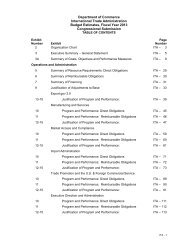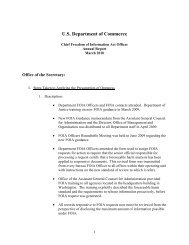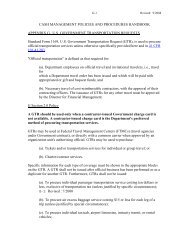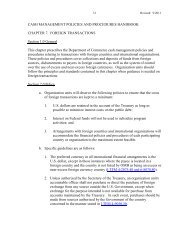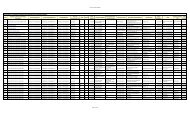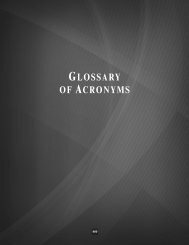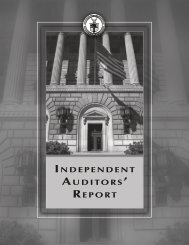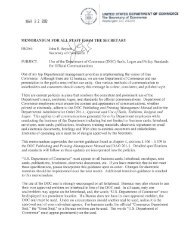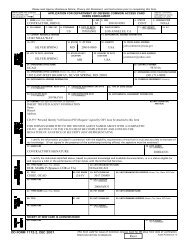Chapter II SUMMARY OF PERTINENT LAWS AND REGULATIONS
Chapter II SUMMARY OF PERTINENT LAWS AND REGULATIONS
Chapter II SUMMARY OF PERTINENT LAWS AND REGULATIONS
Create successful ePaper yourself
Turn your PDF publications into a flip-book with our unique Google optimized e-Paper software.
<strong>Chapter</strong> <strong>II</strong> <strong>SUMMARY</strong> <strong>OF</strong> <strong>PERTINENT</strong> <strong>LAWS</strong> <strong>AND</strong> <strong>REGULATIONS</strong>Section 1 Statutory Citations and ExcerptsA. Statutory Citations1. The Constitution of the United States, Article IThe "power of the purse" is a legislative power. The Constitution lists the powerto lay and collect taxes (section 8) as one of the powers of Congress and providesthat funds may be drawn from the Treasury only pursuant to appropriations madeby law (section 9). Neither the Constitution nor the procedures subsequentlydeveloped by the House and Senate provided for a budget system.2. The Budget and Accounting Act of 1921 (P.L. 67-13; 42 Stat. 20) (June 10, 1921)This Act established an executive budget process; it did not directly alter theprocedures by which Congress makes revenue and spending decisions. ThePresident was required to submit his budget recommendations to Congress eachyear, and the Bureau of the Budget (renamed the Office of Management andBudget (OMB) in 1970) was created to assist him in carrying out his budgetaryresponsibilities. The 1921 Act also established the General Accounting Office(GAO) as the principal auditing arm of the Federal Government. The Budget andAccounting Act of 1921, as amended, remains the statutory basis for thePresidential budget system.3. The Congressional Budget and Impoundment Control Act of 1974, (P.L. 93-344;88 Stat. 297) (July 12, 1974)This Act established a Congressional budget process centered around a"concurrent resolution on the budget", scheduled for adoption prior to legislativeconsideration of revenue or spending bills. The central purpose of the processestablished by the Act is to coordinate the various revenue and spending decisionswhich are made in separate tax, appropriation, and legislative measures. To assistCongress in making budget decisions, the 1974 Budget Act established theCongressional Budget Office (CBO). During the years that the Congressionalbudget process has been in operation, its procedures have been adapted byCongress to changing circumstances.4. Balanced Budget and Emergency Deficit Control Act of 1985, P.L. 99-177; 99Stat. 1037) (December 12, 1985)This Act is commonly referred to as the Gramm-Rudman-Hollings Act.Following a decade of experience with the 1974 Budget Act, Congress enactedthis legislation to make a number of changes in the budget process. These laws<strong>II</strong>(1)-1



